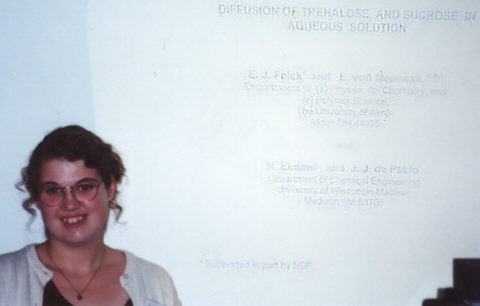

Trehalose is emerging as superior substitute for sucrose in solution as a cryoprotectant, e. g., to preserve organs destined for transplantation. We have used the proton NMR pulsed-gradient spin-echo method between T = 30 and 85 deg. C to study the self-diffusion of solvent and solute in aqueous solutions of these molecules as function of their concentration, c. We find that both solute molecules diffuse substantially more slowly than water at corresponding c and T; that addition of water accelerates solute diffusion more rapidly than that of water; and that while at a given c and T water diffusion is insensitive to solute identity, trehalose diffusion is slower than sucrose diffusion. The latter effect increases with c, approaching a factor of two at the highest c. In these respects our results correspond closely to those of our extensive numerical simulations of these systems. Free-volume theory is employed to explore the cooperative kinetic interactions between solvent and solutes, and to account tentatively for part of the superiority of trehalose to sucrose as preservation agent. Differences in crystallization behavior also seem to be involved.
Back to Zone Meeting Page
Back to SPS Home Page